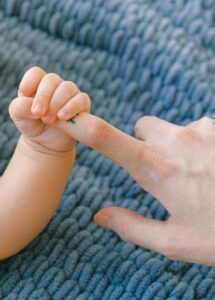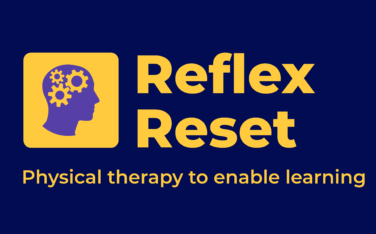 All readers are familiar with the sight of a young baby gripping onto a nearby finger, when we persuade their older siblings “look – she likes you!”. This is the automatic Palmar reflex – designed to protect the baby by holding onto the mother. The Moro reflex is seen at birth when all the baby’s senses are stimulated at once: the onslaught of noise, light, smell and touch startles the baby, and they take in a big breath and let out their first cry.
All readers are familiar with the sight of a young baby gripping onto a nearby finger, when we persuade their older siblings “look – she likes you!”. This is the automatic Palmar reflex – designed to protect the baby by holding onto the mother. The Moro reflex is seen at birth when all the baby’s senses are stimulated at once: the onslaught of noise, light, smell and touch startles the baby, and they take in a big breath and let out their first cry.
Babies have many such reflexes, known as primitive reflexes, designed to help the birth process, to aid survival, and to continue brain development; for a baby’s brain is only 25% of the size of an adult brain. It will double in size during the first year and will be 90% developed by the age of five. I think all mothers are grateful the brain is no bigger at birth! These reflexes enable the brain to develop connections with different parts of the body, including eye functioning, so that the baby learns to crawl, walk, and talk.
In normal brain development, when these reflexes have done their job they are ‘switched off’ and replaced by adult reflexes. In some children, however, these primitive reflexes are retained, which can cause them to have balance or coordination issues – they might be bottom shufflers or late to learn to walk, or struggle with learning to swim or riding a bike. Eye function may be immature so that the child may struggle with learning to read and write, as their eyes cannot track across the page, or they have poor hand-eye coordination so struggle to catch a ball. If a child retains the Palmar reflex, they may adopt an unusual pencil grip because they haven’t developed the normal pincer grip.
Children learn to compensate and do things differently, but the brain is consciously overriding these reflexes rather than using the more mature, automatic reflexes. School inevitably becomes a struggle: the child will be reprimanded for wriggling, for being easily distracted, for holding the pencil wrong, for taking longer to complete work. They will be at lower reading levels than their peers, which can affect self-esteem. If the Moro reflex is retained, the child could be overwhelmed by sensory overload – the noise of the classroom, the smell of the canteen, the feel of their school uniform. The child will constantly and exhaustingly be on the alert to avoid being startled.
If any of these descriptions ring true for your child, or someone you know, be assured that something can be done to help. The INPP Neurodevelopment Programme, devised nearly 50 years ago, is used around the world to diagnose and treat retained reflexes using specific exercises that are repeated daily for 5-10 minutes, usually over 9-12 months. This removes the retained reflexes allowing the child to reach his/her full potential.
